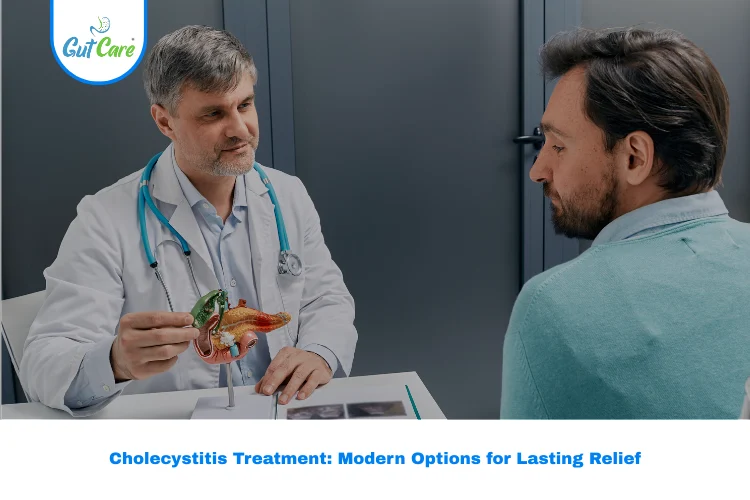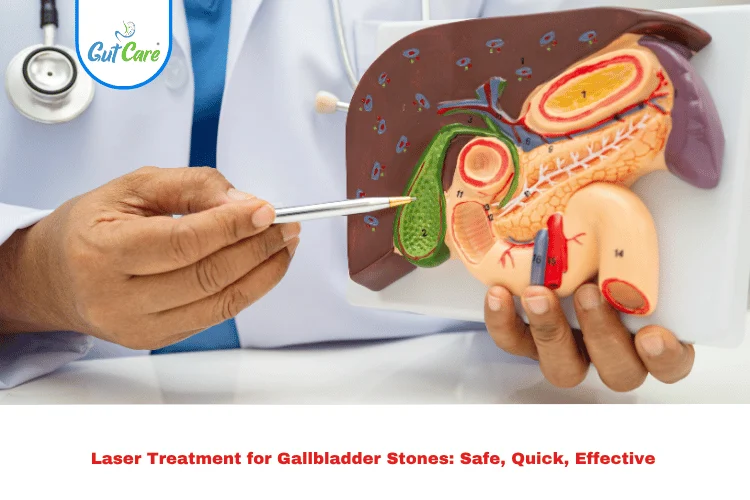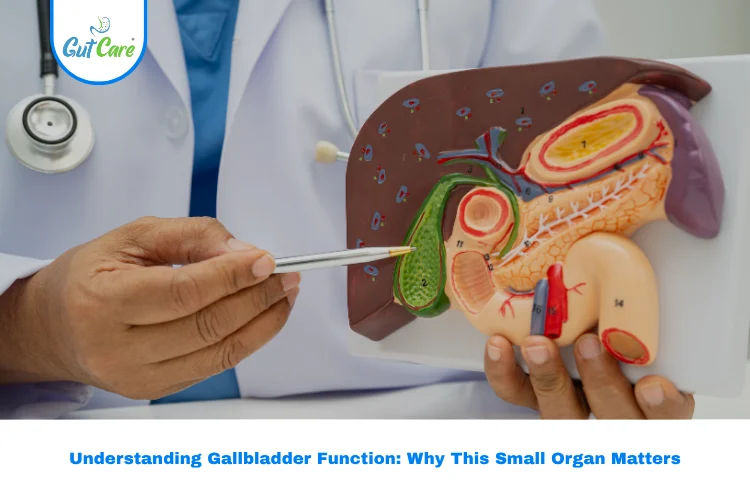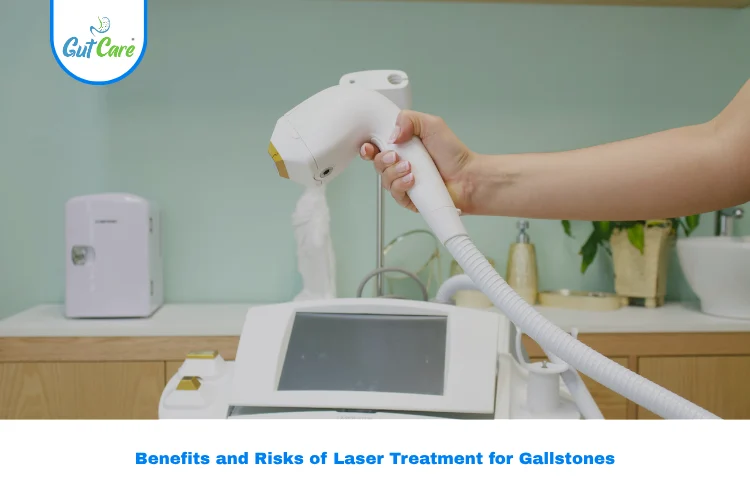When it comes to gallbladder health, one of the most common conditions patients face is cholecystitis. Timely and accurate cholecystitis treatment can prevent complications and ensure lasting relief. At Gutcare Clinics in Bangalore, Dr. Yuvrajsingh Gehlot, an experienced colorectal surgeon, provides expert guidance and modern treatment solutions tailored to each patient’s needs.
Understanding the cholecystitis definition, recognizing symptoms, and knowing treatment options are essential for protecting your health. This guide will walk you through everything from causes to modern treatment approaches.
Cholecystitis Definition
Cholecystitis is the medical term for inflammation of the gallbladder. This condition usually happens when gallstones block bile ducts, though infections or bile flow problems can also be responsible. If left untreated, cholecystitis may lead to severe complications, including gallbladder rupture or infection spreading to nearby organs.
Cholecystitis Causes
Several cholecystitis causes can trigger this painful condition:
- Gallstones: The most common reason, where hardened deposits block bile ducts.
- Bile duct obstruction: Caused by stones, tumors, or scarring.
- Infections: Bacterial infections inside the gallbladder.
- Blood vessel problems: Reduced blood flow to the gallbladder, often seen in chronic illnesses.
- Dietary and lifestyle factors: High-fat diets, obesity, or rapid weight loss increase risk.
Symptoms of Cholecystitis
Recognizing symptoms of cholecystitis early helps in timely treatment. Common warning signs include:
- Severe pain in the upper right abdomen (may spread to the shoulder or back).
- Pain that worsens after eating fatty or heavy meals.
- Fever, nausea, and vomiting.
- Bloating or digestive discomfort.
- Jaundice in severe cases (yellowing of eyes or skin).
Signs of Cholecystitis
Apart from the above symptoms, doctors also check for clinical signs of cholecystitis, such as:
- Tenderness in the upper abdomen.
- Murphy’s sign – sharp pain when pressing on the gallbladder area during inhalation.
- Elevated white blood cell count (detected through blood tests).
Difference Between Acute and Chronic Cholecystitis
It’s important to understand that not all cases are the same:
Acute Cholecystitis:
- Sudden inflammation of the gallbladder.
- Usually caused by gallstones blocking the bile duct.
- Symptoms: sharp right upper abdominal pain, fever, nausea, vomiting, and tenderness.
- Requires urgent medical attention and may need hospitalization or surgery.
Chronic Cholecystitis:
- Long-term, repeated gallbladder inflammation.
- Often results from recurring gallstone blockages or untreated acute cholecystitis.
- Symptoms: dull or recurring abdominal pain, indigestion, bloating, and intolerance to fatty foods.
- Leads to thickened, damaged gallbladder walls over time and usually requires surgical removal for lasting relief.
Diagnosis
Doctors use a combination of tests to confirm cholecystitis treatment.
- Ultrasound scan: The most common and painless method to detect stones and inflammation.
- Blood tests: Check for infections and liver function.
- CT scan or MRI: Used when complications are suspected.
At Gutcare Clinics Bangalore, diagnostic accuracy is emphasized to ensure safe and effective cholecystitis treatment.
Cholecystitis Treatment Options
Treatment depends on severity, patient history, and overall health. Modern approaches include:
Non-Surgical Management
- Antibiotics for infection.
- Pain relievers for symptom control.
- Fasting and IV fluids to rest the gallbladder.
- Lifestyle changes, such as a low-fat diet, to reduce strain on the gallbladder.
Surgical Management
- Laparoscopic Cholecystectomy: A minimally invasive surgery to remove the gallbladder. It is safe, effective, and ensures faster recovery.
- Open Cholecystectomy: Required in severe cases with complications or extensive infection.
Modern surgery focuses on precision and reduced recovery time, which makes laparoscopic procedures the preferred method.
Why Early Treatment Matters
Ignoring symptoms or delaying treatment can result in:
- Gallbladder rupture.
- Spread of infection.
- Severe abdominal infections (peritonitis).
- Recurring pain and digestive issues.
Consulting a specialist like Dr. Yuvrajsingh Gehlot at Gutcare Clinics ensures timely intervention and lasting relief.
Conclusion
Cholecystitis treatment is most effective when started early. By understanding the cholecystitis definition, knowing the cholecystitis causes, and recognizing the symptoms of cholecystitis, patients can seek medical help promptly. Whether managed through lifestyle changes, medications, or modern surgical techniques, treatment at Gutcare Clinics Bangalore ensures safe and lasting recovery.
If you experience persistent abdominal pain, nausea, or digestive discomfort, consult a specialist immediately for personalized care.
FAQs
1. What is the best treatment for cholecystitis?
The best cholecystitis treatment depends on severity. Mild cases may respond to antibiotics and rest, while severe cases often require surgery.
2. What are the early symptoms of cholecystitis?
Early symptoms of cholecystitis include upper right abdominal pain, nausea, vomiting, bloating, and fever.
3. Can cholecystitis be treated without surgery?
Yes, mild cases can sometimes be managed with antibiotics, fluids, and lifestyle changes. However, surgery is often the most effective long-term solution.
4. What causes cholecystitis?
Common cholecystitis causes are gallstones, infections, bile duct blockages, and high-fat diets.
5. Where can I get expert cholecystitis treatment in Bangalore?
At Gutcare Clinics Bangalore, Dr. Yuvrajsingh Gehlot, an expert colorectal surgeon, provides advanced cholecystitis treatment with modern techniques.




